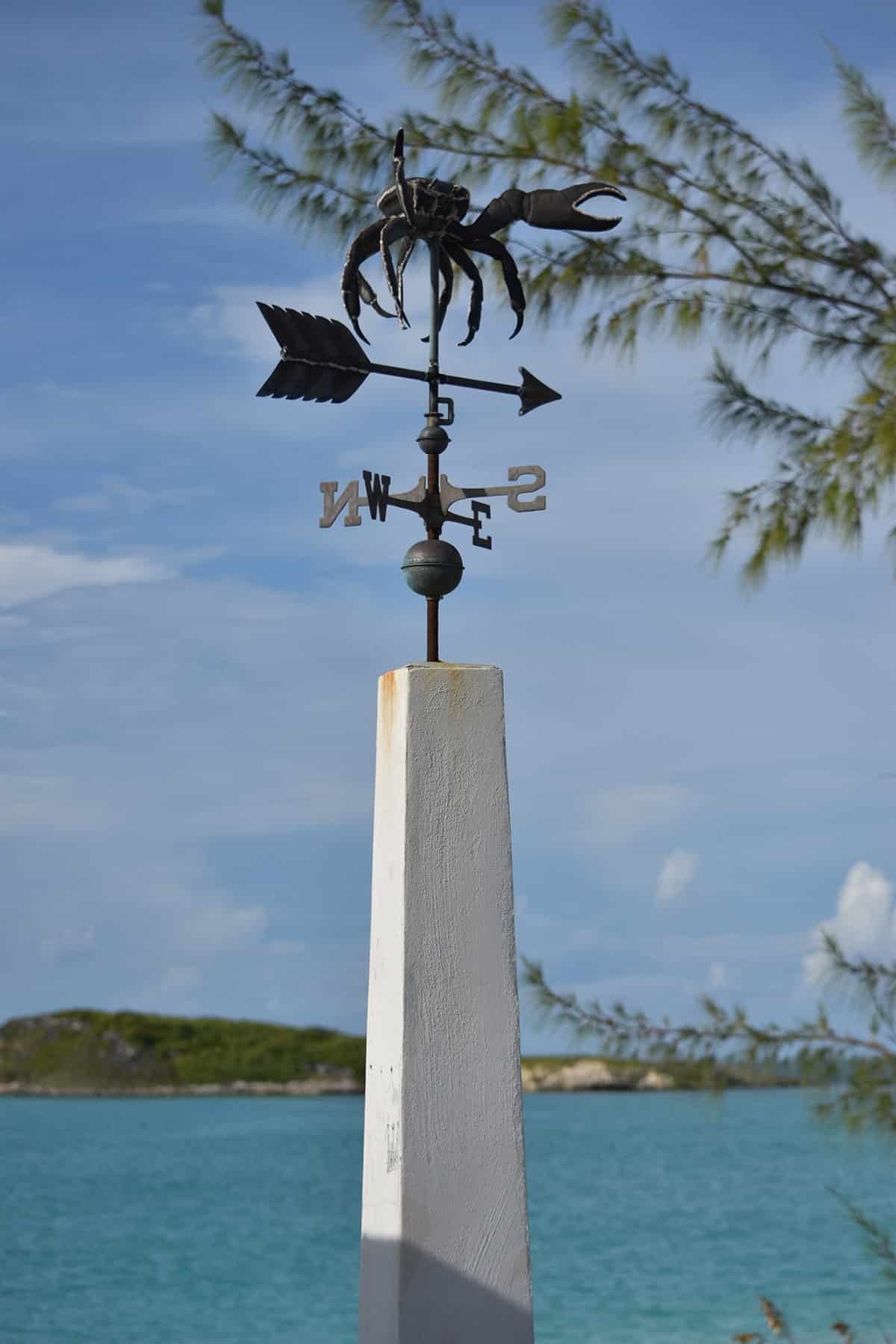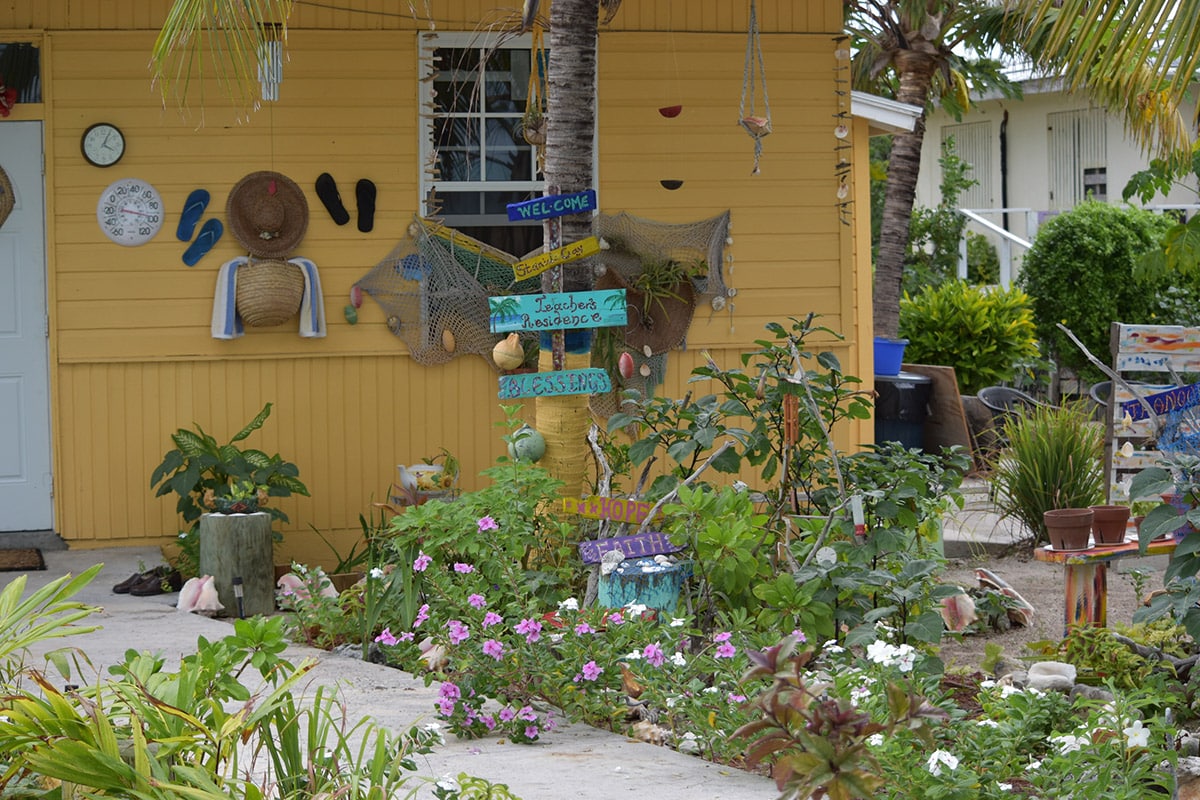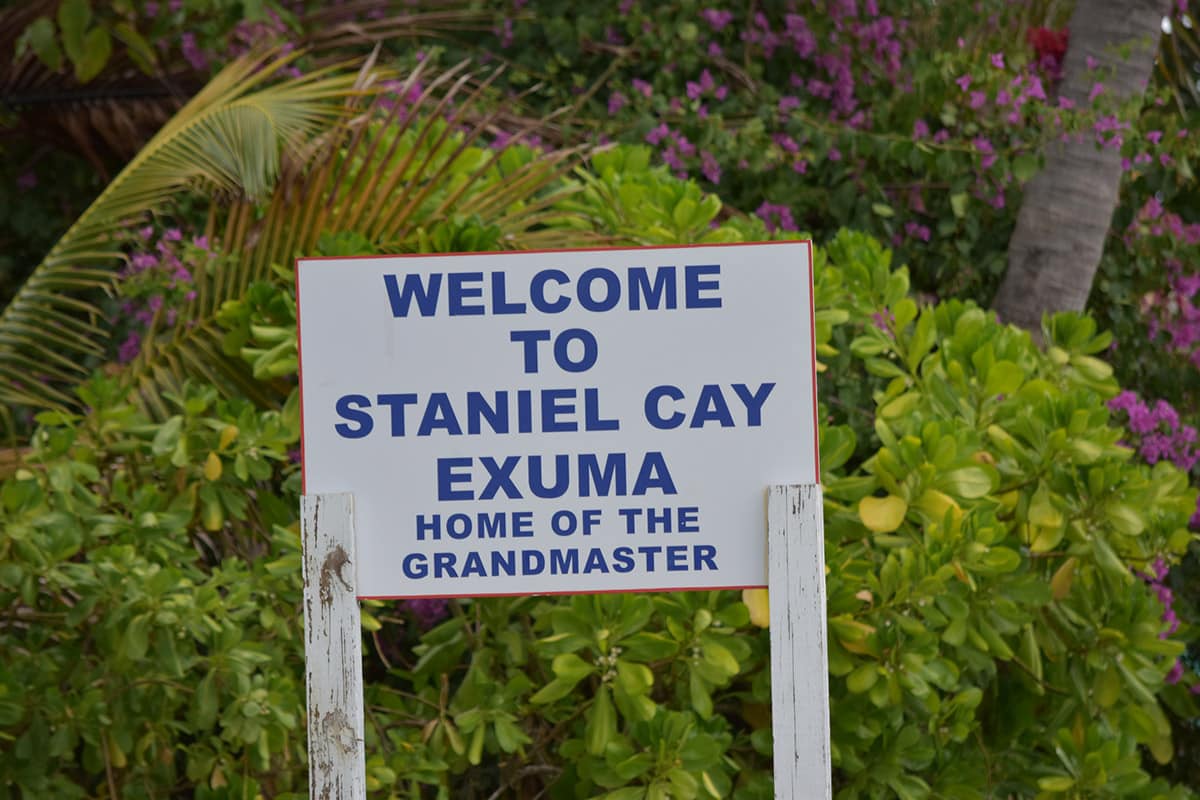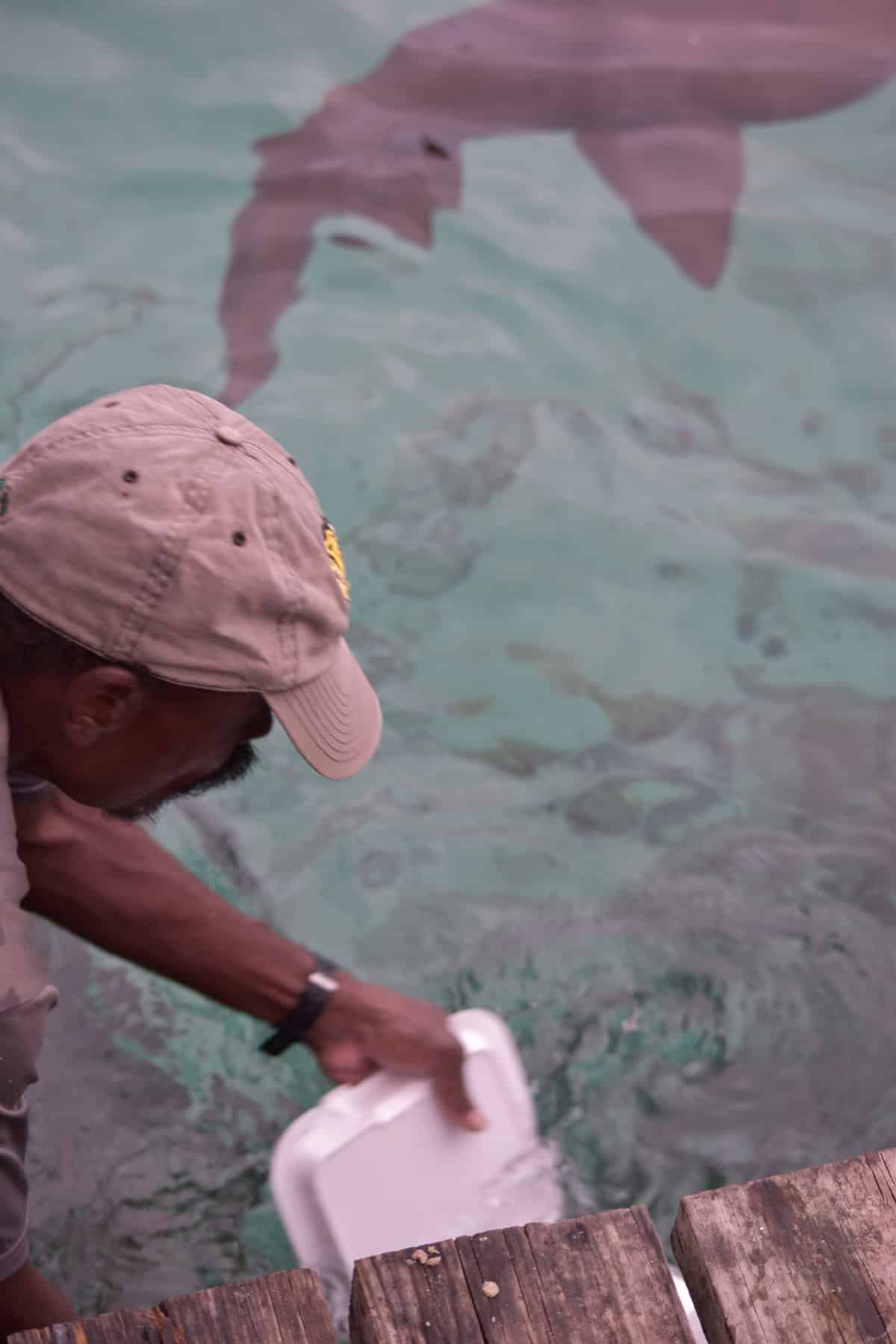
Exuma-blue waters, white sandy beaches and ruins overlooking magnificent views: Exuma has become the new place to vacation in The Bahamas, but Georgetown has had that honour since the 20th Century: it was the chic place to be. Offering a beach on the Tropic of Cancer that can compete with any in the world, Exuma is now the home of an all-inclusive Sandals resort that replaced the former four-star Four Seasons Emerald Bay that was beleaguered by labour problems and closed when it was unable to function at its customary high standards of excellence. Chat and Chill along with many small businesses offer entertainment and great food.
Tourists look for local culture, not international packaged culture for mass consumption. Exuma is a gem of unique culture. It is at once the home of the ruins of the plantation where the enslaved Pompey was meant to have risked his life to rebel; along with some of the most beautiful beaches in the country, and a rich cultural suitcase of cays and rocks, Exuma is if nothing, truly exquisite. The cays also boast some of the most infamous places in The Bahamas. Exuma saw one rise to fame with the late 1970s early 1980s drug trafficking boom.

Norman’s Cay became synonymous with drugs and guns, and the government was revealed to have intimate relations with drug dealers as the notes from the Commission of Enquiry would later reveal, and as NBC News charged. The Bahamas, as history would attest, was a hotbed of illegal activity. The numerous seaplanes and sunken boats attest to this. These also lent a particular bent to the stories of Exuma.
Sadly, many of these drug-era relics have now been removed. The tales of drug lords on Norman’s Cay are far less complete without the tangible part of history. The Rolle plantation is a site well worth visiting. The escaped enslaved, Pompey, speaks directly to the theory that slavery was more gentle in The Bahamas, and therefore slaves did not resist nor did they rebel. Pompey was one of those slaves who did both and led an important revolt on that island. He was later flogged. We think little of the traumatic culture and the culture of violence inherited from the scars of slavery because, again according to many, it was simply too far away. The importance of tangible heritage to be able to reconcile the past with the present becomes clear.

Exuma holds a great deal of tangible heritage, from the Bowe plantation to the Pompey statue and the Rolle plantation. Though better maintained than the historical sites on San Salvador, the history of Exuma is also under threat of erasure. The culture is rich in piracy and exploitation, but it has turned slowly to land theft and direct foreign ownership. The Exumas, made up of mainland Exuma, George Town and Little Exuma along with the cays, has incredible rocks that span from North to South. Many of these cays were already under private ownership before the Bahamas becoming an independent country in 1973. Some were gifts by the Royals to other members of the royal family and some purchased by wealthy individuals for their private pleasure.
This is once again becoming a serious matter of concern on the Exumas as cays are swallowed up by wealthy land speculators and all-inclusive developments that seek to create a four-star Paradise out of natural Paradise. The government is thrilled to sell, as are realtors. Sadly, this changes the geography of the space and erases culture. As islands become private, Bahamians are marginalized, or they simply die out, and citizens can never revisit those now private enclaves.
As the cays disappear into a plethora of No Trespassing signs posted at the low water mark, it seems that Bahamian culture is challenged. These islands and rocks are the home of native plants that hold so many remedies and the livelihoods of great parts of communities. The industry that we so often boast about as a cultural fixture is straw work. However, a great deal of the ‘Top” is located on these now private cays and as they become off limits to the folk, then the tradition they hold is lost. If straw is unavailable, then a great part of Bahamian cultural production is destroyed.

As development increases, the built environment removes Thatch and Top, therefore, these steadfast remnants that require a certain amount of cultural leadership to hone one’s skills in the art of straw plaiting; including the elders who can instruct in these arts and access the raw materials are the only things that will ensure that this industry survives. Of course, there will be newer ways to create straw works, but the old ways will be eradicated. It is very much like historical artifacts being used to demonstrate the existence of a people before the present; if these are destroyed, buried by development, removed and burnt, or simply sold to the lowest bidder, they will never be accessible to Bahamians again. Life on Exuma may be slower than on New Providence, but that is as it should be.
There is no need for every island to have the same level of development. In discussions with locals, it became clear that many felt somewhat cut off from the tourist market. They have been, according to them, removed by the resorts that cater to every need of the visitor. Perhaps this is something that needs exploration! If resorts offer everything that tourists need, then why would they bother to leave the resort?
How do locals – craft persons- benefit from them being beyond their reach? From Farmer’s Cay to the infamous Staniel Cay the islands are beautiful. Thunderball Grotto is a part of the tangible past. However, how many folks know about it? How many Bahamians will ever see it, or, for that matter, see ‘Thunderball’? The focus now is on swimming with the pigs, with the Stingrays and the powerboat adventure thrill. As a child, the Exumas were perhaps as exclusive, but owning a boat seemed far easier than it is today. As this changes so does Bahamians relationship with the water.

Already an extremely tenuous connection as many Bahamians do not swim and are quite afraid of the water, the disappearance of affordable access points makes the bond delicate. The ecology of culture and the ecology of place are irrevocably altered. As has often been argued, we need a different development model. Tourism cannot carry the entire country, nor should it remove entire cays, rocks, and islands from our collective experience. In the Exumas, an increasing number of privately owned, high-end resorts are buying islands while claiming to be offering Bahamians employment.
How many people on Exuma have the education required to serve in a high-end resort? An IDB study in 2015 demonstrated that there was a shameful lack of soft skills required by high-end resorts on these islands. As the culture further shifts to support this model – away from self-reliance, fishing, and farming – the bigger the need for robust education that is tragically absent on most islands. In fact, most islanders who wish to educate their children well are required to leave their homes and move to Nassau or abroad.
Migration is a serious threat to Bahamian culture. Furthermore, those trained and educated minds who are forced to leave, often, do not return. This is a serious brain drain that threatens the country and its economy, and also results in the erasure of culture and identity. When people leave, their identity leaves with them and the culture obviously suffers. As with many of the cays in the Bahamian family of islands, the depopulation is obvious. The return of older folks from Nassau coupled with primary school aged children that inhabit these spaces mean that there are fewer hands to wait tables, work the front desk, tend bars, manage operations and oversee entertainment in these resorts that promise Bahamians jobs.

Some of the plantation ruins left on Exuma speak to a heritage from slavery that is desired by tourists and visitors. Visitors post about it all the time. Sadly, they also post about removing parts of the Bahamian past to their homes in far off lands. More tragically, as we sell these pieces of history off, we lose the ability to create cultural stops in a world increasingly driven by investigating the history of destinations.
We also need people to speak about the history, folklore and long-standing traditions. When high school students can berate Bahamian tour guides for their lack of information and cultural understanding of the heritage sites they are meant to be promoting, we know that we have lost our way on the road to developing cultural tourism. If we do not teach History or a good job of teaching Social Studies, we ‘deculturate’ our people and compromise the culture we so often boast about promoting. Can we still talk about hip-hopping through the Bahamas or will this be the exclusive preserve for foreign visitors and Disney tourists?
The culture is rich. However, it is deeply threatened by migration, emigration, and development as well as brain drain and the privatisation of land. Lifestyles on Exuma may not appear to be changing, but the culture certainly is. The more empty houses that stand on these cays, barring local access to heritage sites, the less likely the nation is to succeed, and the more likely Bahamian culture is to be transformed into something other than what it is. What would make this sustainable? How do Sustainable Exuma and the National Development Plan address these concerns?